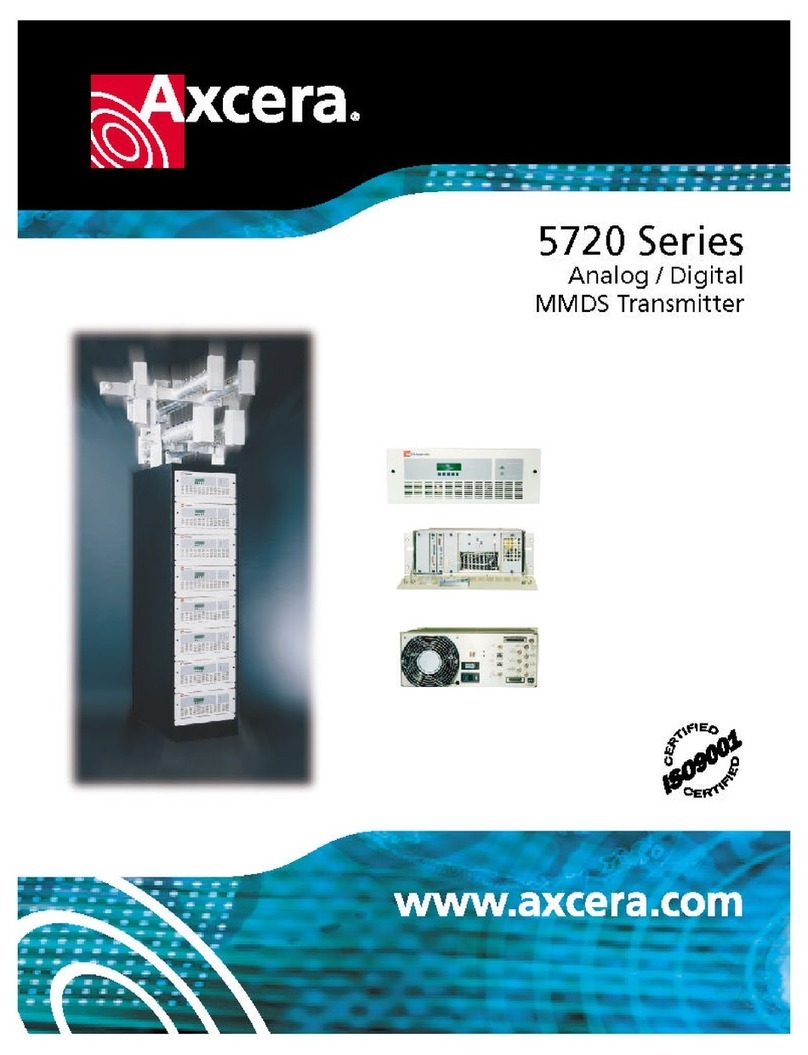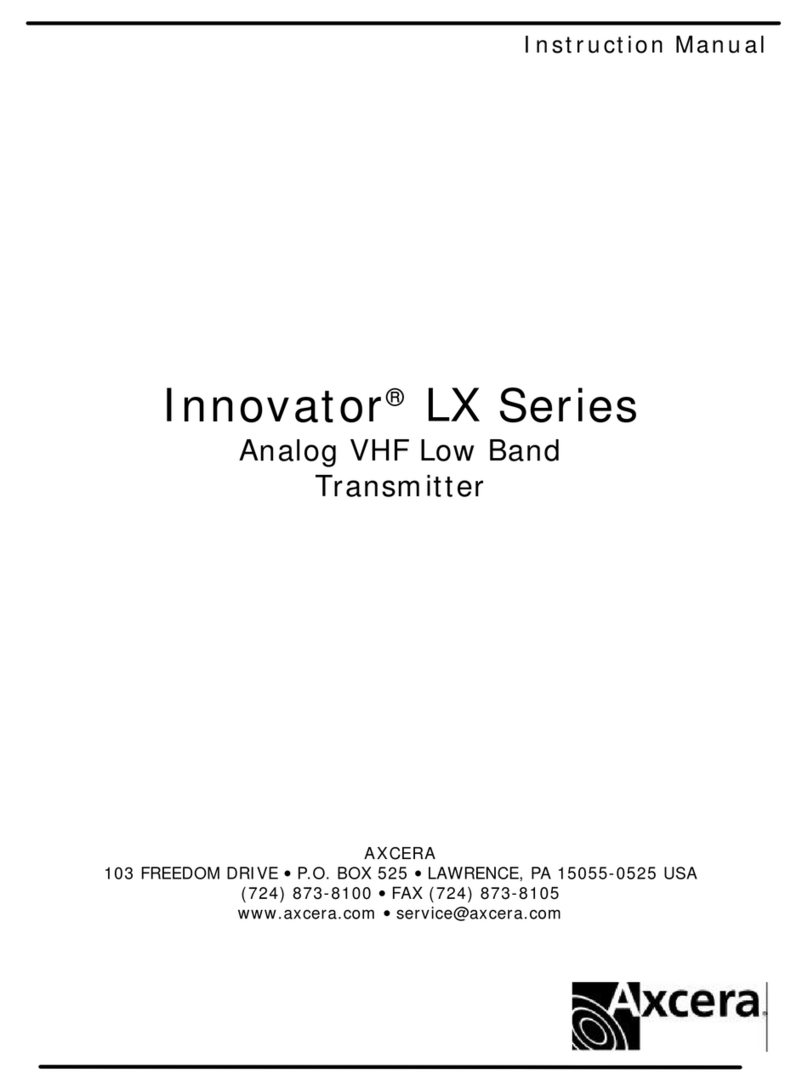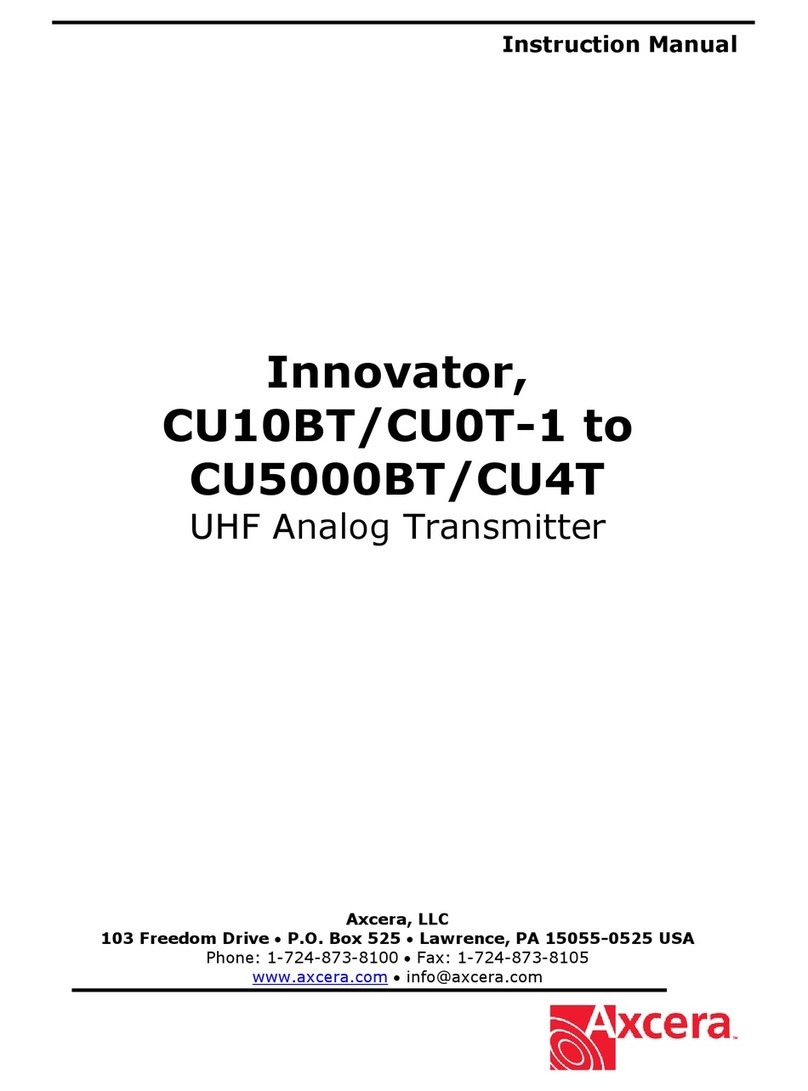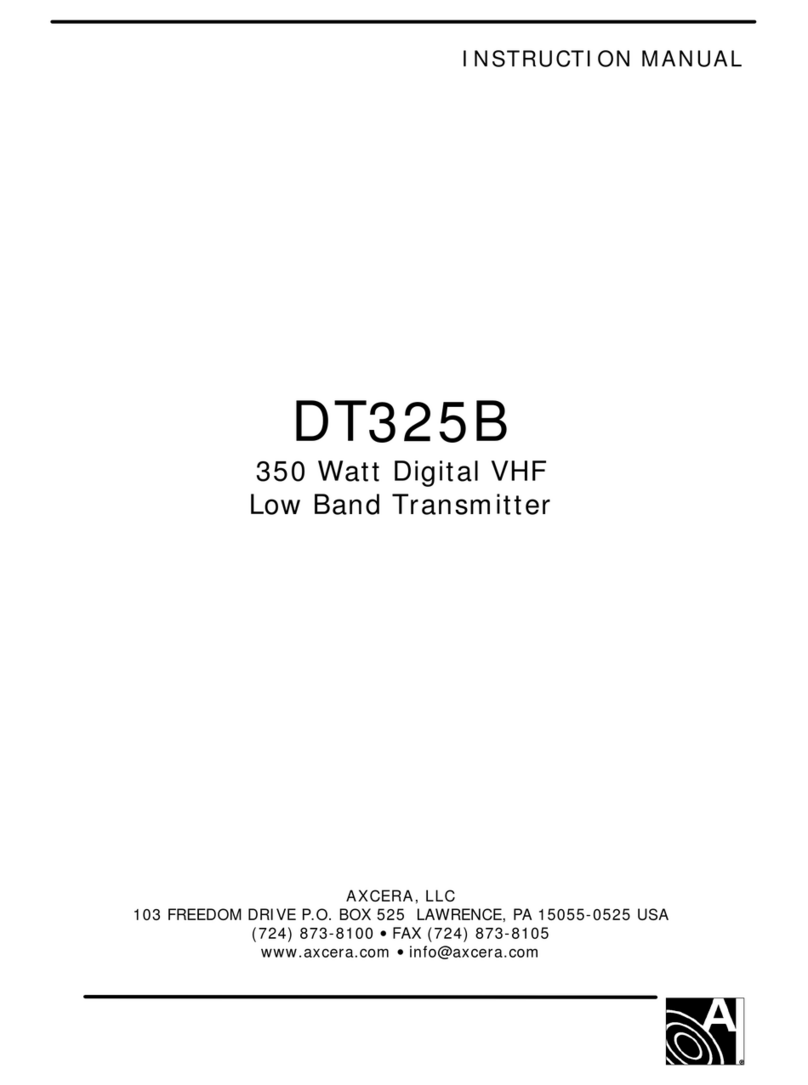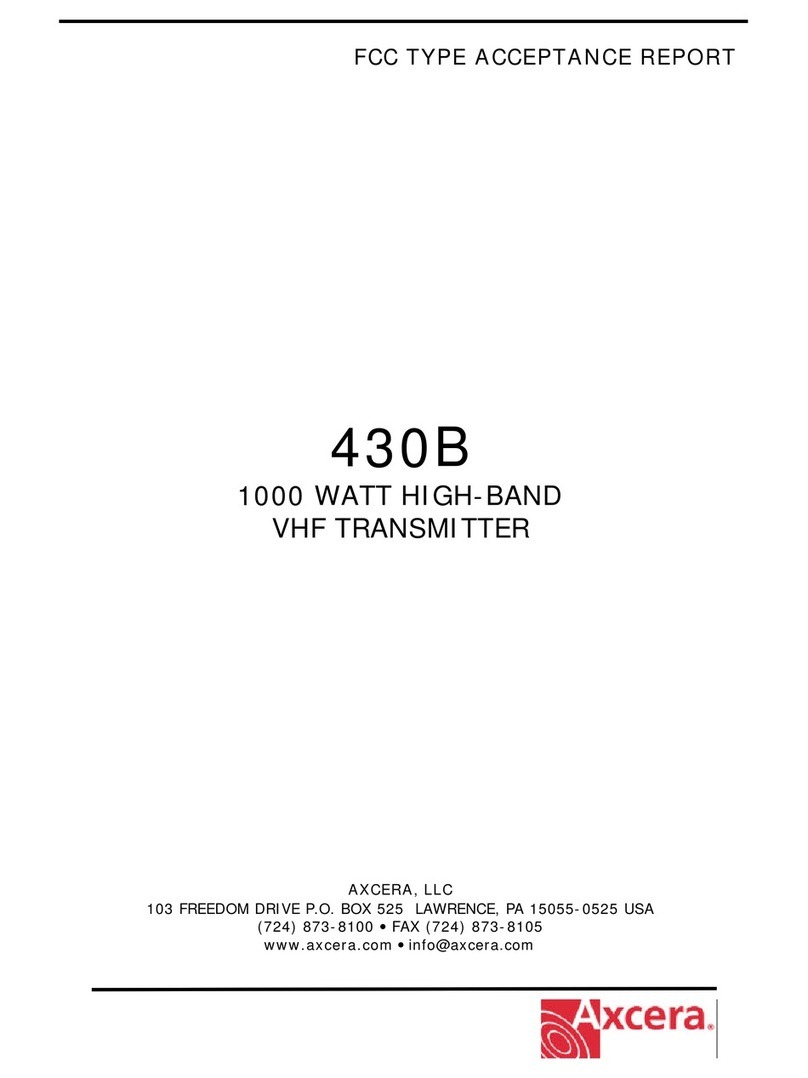
Innovator CHV400BTD ATSC Transmitter Table of Contents
Technical Manual, Rev 0 i January 7, 2010
Table of Contents
Introduction ......................................................................................................
Manual Overview 1
Assembly Designators 1
Safety 1
Contact Information 3
Return Material Procedure 3
Limited One Year Warranty for Axcera Products 4
Unpacking and Installation ................................................................................
Unpacking 11
Installation 11
Tray Slide Installation ................................................................................ 2
AC Input Connections ....................................................................................... 3
Input and Output Connections ........................................................................... 4
Initial On Site Turn On Procedure....................................................................... 7
Typical System Operating Parameters ................................................................ 8
Typical Problems, Indications and Causes in CHV200B Tray................................... 9
LCD Display and Front Panel LED Indicators ........................................................ 9
System Remote Connections .............................................................................2
LCD Front Panel Screens...................................................................................22
Operation Screens 24
Set Up Screens 31
System Description ..........................................................................................37
(Optional) Innovator CHVB Series Web Ethernet Interface ....................................4
(Optional) Innovator CHVB Series SNMP Ethernet Interface...................................47
Circuit Descriptions of Boards in the CHV200B System .........................................49
(A1) 8 VSB Demodulator Board (1308275) - Only used with BRD operation 49
Overview..................................................................................................49
Microcontroller Functions............................................................................49
Jumper and DIP Switch Settings..................................................................49
(A2) Digital Modulator Board (1304883), Part of the Digital Modulator 50
w/Power Conditioner (1309629) 50
SMPTE-3 0 Input ......................................................................................50
Channel Coder ..........................................................................................50
Analog Output Section ...............................................................................50
Pilot Frequency Generation.........................................................................50
Voltage Requirements................................................................................5
(A3) IF Pre-Corrector Board (1308796) 51
Pin-Diode Attenuator Circuit ........................................................................52
In Phase and Quadrature Corrector Circuits ..................................................52
Frequency Response Corrector Circuit..........................................................53
ALC Circuit ...............................................................................................53
Input Fault and Modulation Fault Circuitry ....................................................54
± 2 VDC, +6.8 VDC, and VREF needed to operate the Board .........................55
(A4) Frequency Agile Upconverter Board (1309695) 55
(A5) ALC Board, Innovator CX Series (1308570) 56
(A6) Amplifier Assembly (1313959) – Used in the CHV20B Tray 57
(A6-A ) VHF HB Pre-Driver Assembly ( 3 3899) ..........................................57
(A6-A2) 50 Watt Amplifier Pallet, Italmec ( 3 3484) .....................................58
(A6) 200 Watt Driver Amplifier Assembly (1313912) – Used in the CHV200B 58
(A6-A ) 50 Watt Amplifier Pallet, Italmec ( 3 3484) .....................................58
(A6-A2) 500 Watt Amplifier Pallet, Italmec ( 3 358 ) ...................................58
(A7) Output Metering Detector Board (1313747) 58
(A8) Control Card, Innovator CX (1312543) 59
